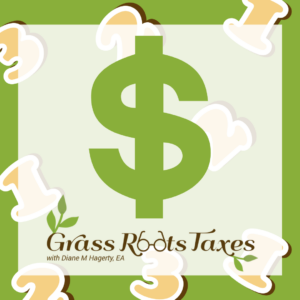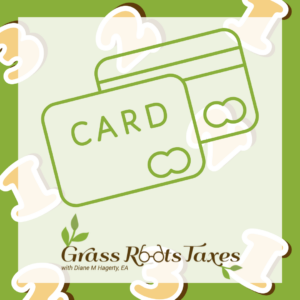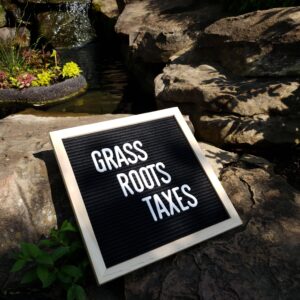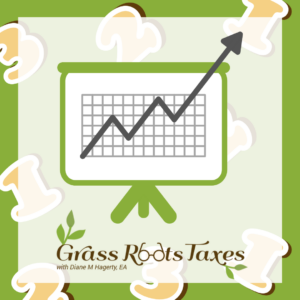How do I deduct my credit card payments? This is a very common question in my office and not an easy concept. Taxation is not based on cash flow.
What is Cash Flow?
Cash flow is the immediate feeling in your wallet. It is easy to understand. You put money in the bank, and you take it out.
If you run a little short before you get paid, you can put a few things on the credit card. Your bank balance didn’t change. Your cash did not ‘flow’.
When you need a new work truck, you buy it on payments. Your cash ‘flows’ when you make a payment. This is cash flow. It isn’t a true reflection of how you are doing financially because you are borrowing money to cover expenses.
Credit Cards and Loans
Let’s break down how credit cards and loans really work. You load up the truck and realize one of your saw blades is broken. You just paid your rent and crew, you have clients paying for a big job tomorrow, and you don’t want to spend the last $100 in your account. So, you go to the big box home store and buy a saw blade on the credit card.
What just happened? Your bank balance didn’t change. There was no cash flow. Your wallet felt nothing. But yet you have a brand-new saw blade that you can use to make money today. How is that? It certainly wasn’t free. Big Box doesn’t hand out free saw blades to people with cash flow problems. What happened is that the credit card people just paid for your blade and made you a loan for the price of the blade. You now have the benefit of a new blade without any change in cash flow. But then the bill comes…
Payments and Matching
A few weeks later, you get the credit card bill. The bank wants you to repay that loan. But what if the bill also has 5 other saw blades, a compressor, and a laptop on it from months ago? This is where cash flow and profit become very different.
Because of this difference, accounting follows certain principles. One of these principles is matching. The matching principle states that expenses are recorded in the same time period as the revenue (income) is earned. You had full use of these items. Therefore, we report the expenses when you buy things, regardless of whether you pay for it with your money (cash flow) or someone else’s (credit card). That way, you are matching the money you earned with the expenses to earn it. This shows a clear picture of your company’s financial health.
Profit
So how does this affect you when you have me do your taxes? If you are showing me your payments on credits cards, vehicle loans, business loans, or mortgaged properties, you are showing me your cash flow. Cash flow is important, but it is not how profit is calculated. To figure your profit, you need to record all your credit card charges at the time they happen. You record them as if you paid for them. (You did, you just borrowed the money!) This means you list the category of each item, not how you paid for it. For example, saw blades would be “supplies” not “Mastercard.” Items that will last several years (like buildings and trucks) are deducted over a period of years but are still recorded at the time of purchase.
What do I do when I see “credit card expense” or “loan payment” on someone’s list of expenses? I go back and find out what they bought, when, how much interest was paid, and if there were any loan fees. If the credit card charges go into previous years, I’ll need be sure that these receipts were not deducted at the time of purchase.
A common scene in my office is someone in disbelief that they made money (profit) (and owe taxes) when they are sure they lost money (cash flow). In the first few years of their business, they ran up debt on the credit cards, bought vehicles and trailers, took out loans, etc. The expenses are properly recorded in those years. Then, the business takes off and they start paying off the debt. Paying off debt is not a new expense. The bank gave you money to pay for your stuff. Now you are giving it back. You didn’t report the money as income when you the bank gave it to you, and you don’t report giving the money back as an expense.
So, in the first profitable year, they pay off a lot of debt. They can show a taxable profit and negative cash flow by paying off debt. This is why it FEELS like you lost money but you still have a taxable profit. Lots of cash ‘flowed’ out, but it wasn’t toward current expenses and doesn’t affect your current profit.
What should I do now?
Keep track of your credit cards and loans the same way you keep track of your checking account. Keep a register spreadsheet, journal, or use bookkeeping software.
Always save your receipts to show the business purpose of your purchases. Walmart could be anything! Save that receipt! Keep the paperwork from buying vehicles or machinery and bring it to your tax appointment.
If keeping track of everything is getting out of hand and overwhelming: Do what you do best. Get help with the rest.
Like this post? Check out more from Grass Roots Taxes:


